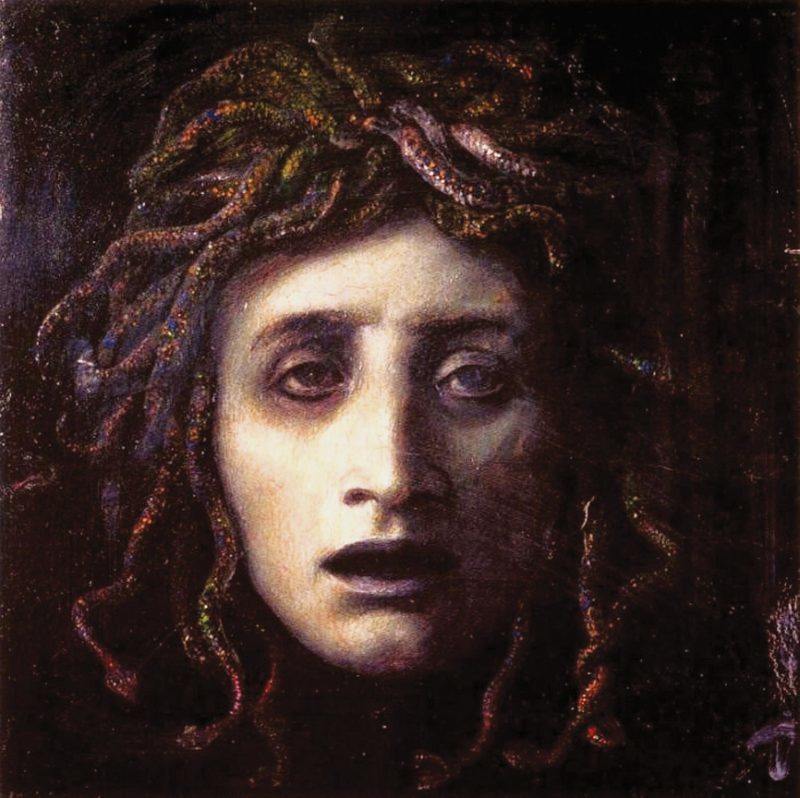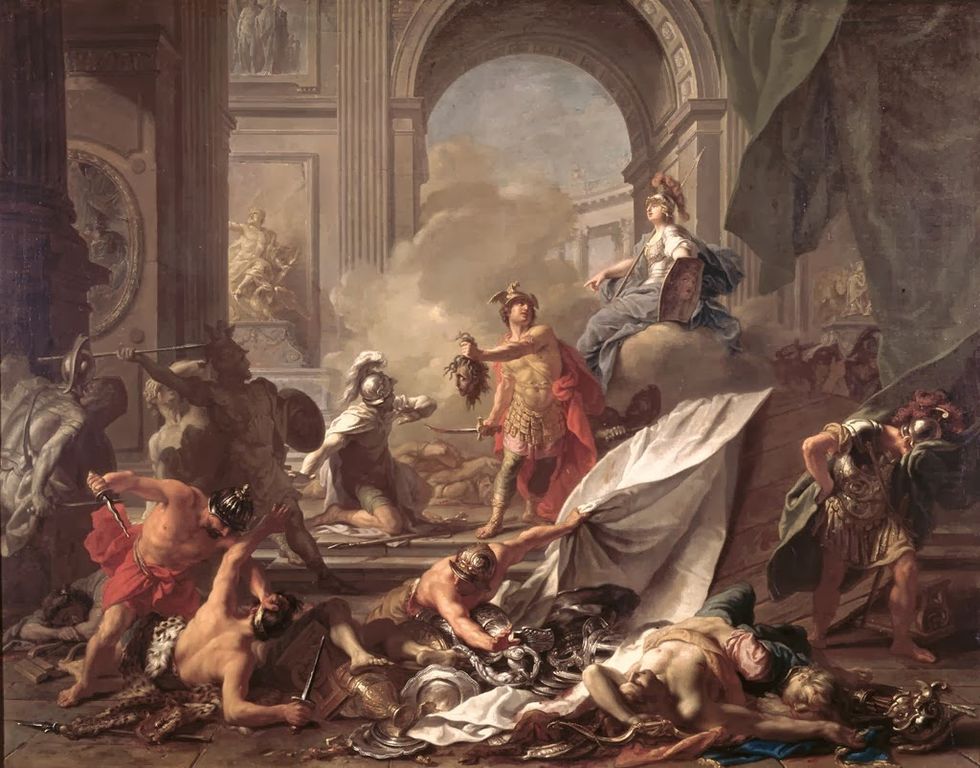Gorgons
Terrifying monsters with fiery eyes and snakes for hair, whose gaze turned people to stone.

The Myth of the Gorgons tells us that they were three monstrous sisters. The most famous of all three was Medusa, whose head of snakes, instead of hair, was so horrible in appearance that whoever looked at it was transformed into stone.
The Gorgons were triplets. Their parents were the brothers Phorkys and Keto, who were deities of the sea and also had daughters the Graeae, another group of triplets who were born and shared one eye and a tooth. According to Hesiod, the two of the Gorgons, Stheno and Euryalis were unaged and immortal. The Third most famous sister was Medusa. She was mortal and had a violent ending. The artists depicted the Gorgons as strange creatures with snakes instead of hair, with satanic smiles or expressions like horror screams. They imagined them having tusks of wild boar, brass arms and golden wings.
According to a version of the myth, Medusa, was originally a beautiful priestess of the goddess Athena, when god Poseidon violated her. Athena was outraged by the sacrilege but did not have the power to avenge the god of the sea directly. So she took revenge indirectly, transforming Medusa into the terrible Gorgon. According to a slightly different version of the story, Athena transformed Medusa into a monster when she bragged to be more beautiful than the goddess she was serving. This case of boasting before the punishment (that is, the Hubris that is ultimately punished), we find it quite often in Greek mythology.
Polidex, King of Serifos, had fallen in love with Princess Danae, but to marry her, he should first get rid of her son Perseus, son of Zeus. So he ordered him to bring the head of Medusa as a wedding gift. The king believed that he sent him to a certain death, since the Gorgon would turn Perseus into stone.
Before Perseus met Medusa, he had to face Graeae, whose main task was to block the way that led to their sisters, the Gorgons. Perseus stole their unique eye and tooth and forced them to reveal to him the location of the Gorgons, which was in the far west where the sun was setting and was the gateway to the Lower World. The gods equipped Perseus with what was needed to complete his feat. They gave him Ares’ helmet, which made him invisible, the winged sandals of the messenger god Hermes, the magic bag for the head of Medusa and a curved sword like a sickle.

Perseus used his winged sandals to fly over the ocean to the homeland of the Gorgons. On Athena's advice, he approached Medusa by stepping backwards, not to see the monster directly, except as an idol in his polished shield. Perseus thus beheaded Medusa in her sleep, put her severed head in his bag, and escaped from the wrath of Stheno and Euryalis, with his winged sandals and the helmet of invisibility. At this point there is the myth that two of Poseidon's children sprang from Medusa's blood. These were Pegasus, a winged horse, and Chrysaor who was a giant with a golden sword (from the words chrysos(gold)+ aor (sword) ).
The head of Medusa was a powerful weapon for Perseus. When he fell in love with Andromeda and saved her from the sea monster, he transformed her suitor and her followers into stone so that he could marry her. He freed his mother, Danae, from Polidex’ satanic trap, turning him and his supporters into stone. Then he made Polidex’ brother, Dectes, king of Serifos.

It is said that Perseus used the power of Medusa to turn Atlas into stone to set the Titan free of the eternal weight of the sky. Eventually Perseus donated the head of Medusa to the goddess Athena, who placed it either on its auspices (shield) or on the breastplate of her armor as a symbol of her protective power.
The image of the Gorgons often appears in ancient Greek temples, in coins and vases. Many scholars believe that their similarity to monsters was meant to exorcise evil. There are other interpretations. Some comment the Gorgon as a symbol of female power. Her face portrays the cry of birth pain, while her ability to transform into stone represents the devastating ability of wicked women. Putting the monster's head on his armor, Athena tamed and sacrificed the wild elemental power of the Gorgon.

Her face portrays the cry of birth pain, while her ability to transform into stone represents the devastating ability of wicked women. Putting the monster's head on his armor, Athena tamed and sacrificed the wild elemental power of the Gorgon.